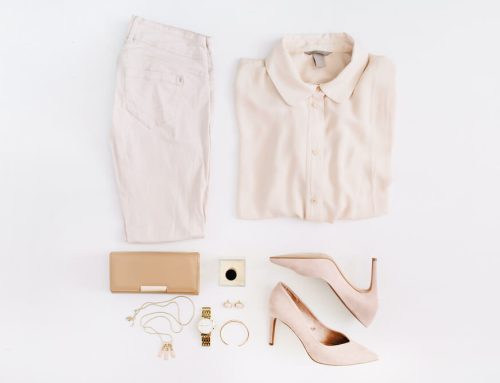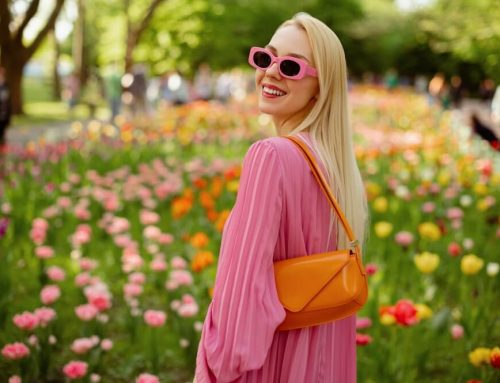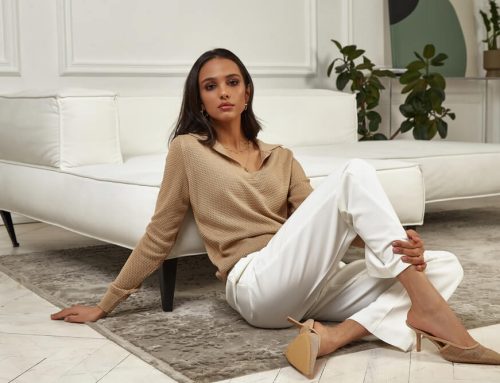Ready to invest in a designer handbag?
Not sure where to start and don’t want to be scammed into buying a fake?
Very few things are more appealing than a new designer handbag, and a well-cared for handbag collection is truly a thing of beauty. But that desirability comes at a cost. Recent statistics suggest the average price of a Chanel handbag has increased by 20 percent year on year, and ‘It’ bags are more elaborate, and therefore more expensive, than ever before.
That doesn’t mean you have to give up.
It is possible to buy a genuine designer handbag without paying the full retail price: you just have to know where to look.
If you want to know whether that Chanel 2.55 is worth investing in or if the Micheal Kors bag your friend is selling is the real deal then here are some top tips to help you spot a fake designer handbag:
Pick Your Shop Carefully
Looking for a luxury shopping experience?
Some TLC from a high brow sales assistant?
A shiny designer carrier bag to swing on your arm?
Then you should head to the brand’s own shop to invest in your new luxury designer handbag. This is the very best way of ensuring that the bag you buy is genuine. After all, you’re never going to find a fake Birkin if you’re in Hermes! However, this will not be the most cost-effective way of investing in a designer bag.
Costs can stretch into thousands of pounds, even if you hit the shops during the most common sale periods (such as January or the height of the summer). Designer bags are a luxury investment. They are not intended to be inexpensive.

© Radu Bercan / Shutterstock.com
Want to buy a designer handbag on a tighter budget? Then there are other options available, but you have to shop carefully. Second hand shops and online selling sites are a great way to find the high price designer goods that you want but on a smaller budget, but you should approach these with caution, and remember that not every bag you see will be genuine.
A good rule of thumb is that if the price seems too good to be true then it probably is. No-one is going to sell a bag that cost them £1,000 for just £150! And if you see the bag of your dreams on a street market for that kind of price, there is almost no chance that it would be genuine.
You should expect to spend around 50% of the original retail price for a preloved designer handbag that is in very good condition. If the price is considerably lower than this then we would advise caution.
So, Where Should You Shop?
Local selling sites will enable you to check out the bag in person without relying on it being posted to you. These will also allow you to ask questions of the previous owner. If you do decide to take a chance and buy a pre-loved bag online then:
- Choose a reputable site that offers guaranteed returns or refunds if you’re not satisfied that the bag you’ve purchased is real.
- Pay using your credit card. This will afford you financial protection if the goods your receive are not as they were described.
Do Your Research
Research, research, research!
You wouldn’t buy a new car without reading as many reviews as possible, visiting the showroom, or taking the car out for a test drive. The same rule of thumb should apply for buying a designer bag.
If you’re in the market for a particular bag, now is the time to get familiar with it.
Try to visit the designers store and look at the bag in person.
Hold it.
Feel its weight.
Take notice of its stitching and all of its small details.
The more you know about the bag, the easier it will be for you to spot a real or fake version when you see it, and the harder you will be to scam!
Know the Signs
When people invest in a designer bag they aren’t just investing in a brand. They are also investing in superior quality that they hope will last a lifetime.
Designer bags command hefty price tags because they are often constructed by hand, they are made from the finest materials, and because they have a certain amount of exclusivity too. All of this is missing if you waste your money on a counterfeit piece instead.

© Settawat Udom / Shutterstock.com
Here are some of the quality –based signs that you should look out for to help you determine if the bag you’re looking at is genuine or not:
- Look at the stitching. If there are any missed stitches, loose stitches, or slanted stitches then these are all signs that the bag you’re looking at could be a fake. A designer handbag will undergo extensive quality control before it reaches the store, and any errors such as this would be picked up.
- Check the tags and labels. These should be printed straight, and feature relevant information about the brand. If the label inside the bag is blank this is an obvious sign that it is a fake. Most bags will detail the country of manufacturer and construction materials: these should be easy to match with the information you have about where the brand make their bags and the material you expect it to be made from.
- Quality Materials. No designer would sell bags made from poor-quality materials. This would only damage their brand. If the bag is supposed to be leather then it should smell and feel like leather. If it is supposed to be canvas then the canvas should be thick and durable. If you’re not happy with the quality of the materials then the bag isn’t likely to be real.
- Make it Weighty. Real designer handbags tend to be heavy, and you can instantly tell a real bag from a fake one simply by picking it up. The hardware on a designer bag is usually made from brass, which is heavy and won’t tarnish easily. If the bag you’re picking up is lightweight then it’s probably not the right bag for you!
- Examine the Logo. A big brand’s logo is immediately recognizable, and is likely to be displayed prominently on any bag that they produce. Luckily, this is also one of the areas where counterfieters are most likely to mess up! Check that the brand name is spelt correctly, that the logo and other hardware is properly secured, and that any smaller copyright marks and other details on the logo are included A good example of this is the classic Chanel interlocking ‘Cs’: in order to avoid breaching copyright laws, many fake Chanel bags actually featuring interlocking ‘Os’ instead.
- Focus on Colour. Looking for a bag in a bright or distinctive colour? Most designers use specialist dying techniques to ensure that the colours of their bags won’t fade. Their bags are aniline-dyed, which means that the leather is coloured throughout. By contrast, most counterfeiters use a cheaper, surface dying process. You can check whether a bag has been surface-dyed by looking at the colour of the leather around the fastening and stitching. If the leather is a different colour inside these small needleholes then it’s unlikely to be a genuine bag.
- Trust your Judgement. If something doesn’t look right then it probably isn’t. If you’re not one hundred percent convinced that the handbag you’re choosing is real then simply don’t buy it: save your money for a bag that you really love rather than invest in the shady world of counterfeits, which are poor quality and unlikely to last for long.
Look for Added Extras
So, you’re convinced that the bag you love is genuine. Is that enough to get you to buy it?
As well as examining the handbag itself, be sure to ask the seller if they also have any of the added extras that most high-profile designer handbags are sold with. This includes a dust bag and box as well as a warranty and certificate of authenticity.
When making such a massive purchase, many buyers would also tend to keep the receipt. Ask the seller if they have the receipt and, if they do, whether you can have it. This will help you to easily authenticate your bag, and will also prove very useful as and when the time comes to sell it on yourself.
The more of these added extras that the seller has available, the easier it will be to prove that a bag is genuine, and the more confident you can be in the quality of your purchase.
Beware.
It is possible for counterfeiters to produce fake warranties, packaging and certificates of authenticity.
If you have any doubt, compare these with images of genuine warranties or certificates of authenticity so that you can be sure that you are not falling victim to an elaborate fake, designed to get even more money from unsuspecting shoppers.
The Most Convincing Fakes
Still not sure?
Can’t decide if the bag you want is genuine?
Many of the most obvious fake handbags are manufactured overseas and, by following these simple steps, it’s easy to find visual clues that the piece you’re looking at isn’t genuine. They misspell brands, they use inferior materials, and they sell in bulk so that it’s almost immediately obvious that you aren’t investing in the real deal.

Unfortunately, there are some counterfeits, often produced closer to home, that are so authentic looking that you may need to bring in the help of a specialist to determine whether they are real or not. There are companies, such as the Vestiaire Collective, that specialize in both selling and authenticating luxury designer goods, including handbags.
How?
Some companies claim to be able to authenticate a handbag simply by seeing photographs of it but the best (and most well-known) companies use two different techniques to check the authenticity of your bag: curation and physical authentication.
These techniques will see specialists examine warranties, invoices, certificates and packaging, as well as physically examining the bag itself. Most specialists will want to hold and really examine the bag before they are prepared to give a piece their professional seal of approval.
If you have already purchased a bag and want to be 100% sure that it is genuine then securing the services of an authentication company could well be the fastest and the easiest way to ensure that your investment is a legitimate piece from the brand you expect. If you choose this route then always opt for a trusted source and don’t be afraid to ask difficult questions. Remember that when you’re paying for a service, it’s important to be sure that the verdict you’re given is correct.
Don’t Blow The Budget
Struggling to find the designer bag you need for the budget you have in mind? Don’t be tempted to choose a counterfeit bag instead, or blow the budget and spend money you don’t have.
Instead, why not consider investing in an up and coming designer instead?
Their bags are likely to feature the same high quality and innovative designs but at more affordable prices. Supporting a new designer is a great way to support the fashion industry, and is also a sensible financial investment too: if that designer goes on to hit the big time then the early design in your wardrobe will only increase in value as time goes on.






Leave A Comment